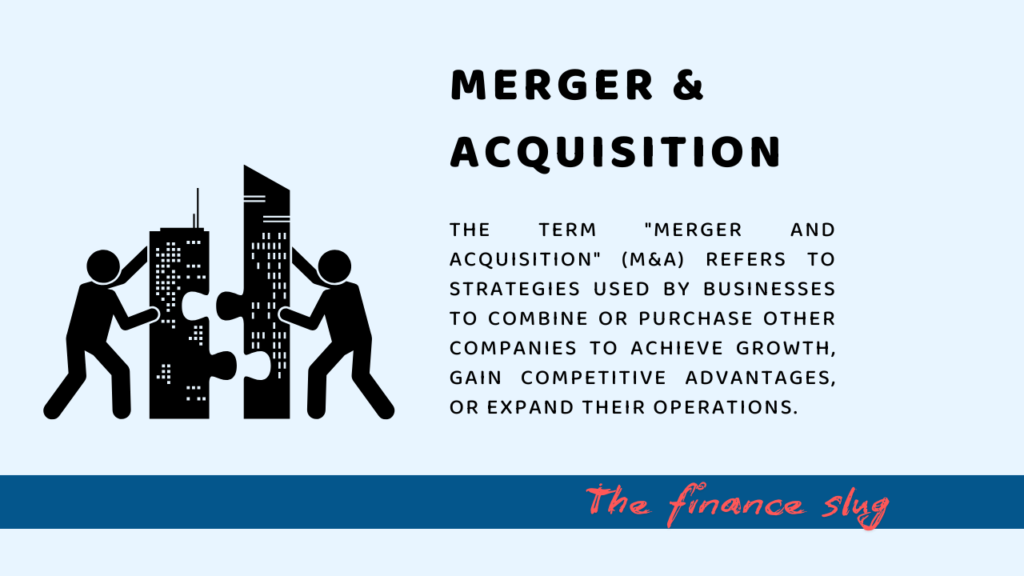
Mergers and acquisitions (M&A) are powerful tools that businesses use to grow, adapt, and strengthen their position in the market. These strategies involve companies coming together in various ways to achieve common goals like expanding their reach, reducing costs, or boosting innovation. While the concept might sound complex, M&A can be understood in simple terms. This guide will explain M&A, its processes, types, effects on shareholders, benefits, challenges, and real-world examples in detail.
What Are Mergers and Acquisitions?
- Merger: A merger occurs when two companies combine to form a single, larger entity. For example, if Company A and Company B merge, they cease to exist as separate entities and operate together under one name. Mergers typically aim to increase efficiency, share resources, and reduce competition.
- Acquisition: An acquisition is when one company takes over another. For instance, if Company X acquires Company Y, Company X becomes the controlling entity. The acquired company might still operate under its brand but follows the parent company’s direction.
Both mergers and acquisitions are designed to create value for the companies involved by improving their market position, enhancing operations, or accessing new opportunities.
Types of Mergers and Acquisitions
M&A transactions can take different forms depending on the strategic goals and industries of the companies involved.
1. Horizontal Merger
This type of merger happens between companies in the same industry and market. For example, two competing smartphone manufacturers merging to become a dominant player. This reduces competition and allows the merged company to control a larger market share.
2. Vertical Merger
In a vertical merger, companies at different stages of the supply chain join forces. For example, a car manufacturer merging with a tire supplier ensures a steady supply of raw materials, reduces costs, and strengthens production efficiency.
3. Conglomerate Merger
Conglomerate mergers occur between companies from unrelated industries. For instance, a technology firm merging with a beverage company diversifies its operations and reduces dependency on a single sector.
4. Market Extension Merger
This type of merger helps companies expand into new regions or markets. For example, a U.S.-based brand merging with a European company provides immediate access to customers in Europe.
5. Product Extension Merger
Product extension mergers occur between companies with related products. For example, a snack manufacturer merging with a beverage company creates opportunities for cross-selling and attracting a broader customer base.
Learn more about M&A Process and Steps
How M&A Affects Shareholders
Mergers and acquisitions have significant implications for the shareholders of both the acquiring and target companies. Let’s examine these effects:
For Shareholders of the Acquiring Company
- Short-Term Impact: The stock price of the acquiring company may experience fluctuations during the announcement and execution phases. Investors often react cautiously, especially if the deal is perceived as expensive or risky.
- Long-Term Impact: If the M&A transaction is successful, shareholders can benefit from higher profits, better market positioning, and increased stock value.
- Ownership Dilution: If the acquisition involves issuing new shares, the ownership percentage of existing shareholders may be diluted.
For Shareholders of the Target Company
- Premium Payouts: Target company shareholders often receive a premium—a price higher than the market value of their shares. This acts as an incentive to accept the deal.
- Exit Opportunity: M&A provides an exit option for shareholders, especially if the company’s performance has stagnated or declined.
Overall, successful mergers and acquisitions can enhance shareholder value, but they also come with risks that need careful consideration.
Why Do Companies Pursue Mergers and Acquisitions?
Companies engage in M&A for several strategic reasons. These motivations often depend on the company’s goals and market conditions.
1. Growth and Expansion
M&A helps companies grow rapidly by entering new markets, reaching more customers, and expanding their geographic footprint. For instance, a local company merging with an international player can gain immediate global presence.
2. Cost Savings and Synergies
One of the primary goals of M&A is to achieve synergies. Synergies occur when the combined entity performs better than the two companies individually. This includes cost synergies, such as sharing resources and eliminating duplicate operations, and revenue synergies, such as cross-selling products to a larger customer base.
3. Diversification
Diversification reduces risk by spreading a company’s operations across different products, services, or industries. For example, a technology firm acquiring a healthcare company becomes less dependent on one sector.
4. Reducing Competition
Acquiring or merging with competitors helps companies consolidate the market and reduce competition. This is particularly common in industries like technology, retail, and telecommunications.
5. Access to Technology and Talent
Acquisitions often provide companies with access to cutting-edge technologies, patents, or skilled employees. For example, tech giants like Google and Apple frequently acquire startups to gain innovative solutions.
6. Financial Benefits
M&A transactions can optimize a company’s financial structure. For instance, a profitable company may acquire a struggling firm to turn it around, or it may use the acquisition to leverage tax benefits.
Steps in the M&A Process
Mergers and acquisitions involve a series of well-planned steps to ensure success. Here’s how the process works:
- Strategic Planning: Companies define their goals for the merger or acquisition, such as market expansion, cost reduction, or diversification.
- Target Identification: They identify potential companies to merge with or acquire based on strategic fit and market value.
- Due Diligence: A detailed analysis of the target company’s finances, operations, and market position is conducted to assess risks and opportunities.
- Valuation: The target company’s worth is determined using financial models and market data.
- Negotiation and Agreement: Both parties negotiate terms, finalize the deal, and sign contracts.
- Regulatory Approval: Authorities ensure the deal complies with laws and does not harm competition.
- Integration: The two companies combine operations, systems, and cultures to work as one entity.
Benefits of M&A
Mergers and acquisitions offer several advantages for businesses:
- Market Reach: Companies can quickly expand into new regions or industries.
- Innovation: Collaboration between companies often leads to better products and services.
- Cost Efficiency: Sharing resources and reducing redundancies lowers operational expenses.
- Stronger Market Position: A combined entity becomes more competitive and resilient.
Challenges of M&A
While M&A has many benefits, it also comes with challenges:
- Cultural Differences: Combining two companies with different work cultures can create conflicts and slow down integration.
- Financial Risks: Overpaying for a company or unforeseen expenses can lead to financial losses.
- Integration Issues: Merging systems, teams, and processes is a complex and time-consuming task.
- Regulatory Delays: Approval processes from authorities can prolong the deal and increase costs.
Real-World Examples of M&A
M&A transactions have shaped the business landscape over the years. Here are some notable examples:
- Facebook and Instagram (2012): Facebook acquired Instagram to strengthen its social media dominance and attract younger users.
- Disney and Pixar (2006): Disney’s merger with Pixar revitalized its animation capabilities, leading to iconic films like Toy Story and Frozen.
- Amazon and Whole Foods (2017): Amazon’s acquisition of Whole Foods marked its entry into the grocery and physical retail markets, enhancing its customer reach.
Conclusion
Mergers and acquisitions are critical strategies that allow companies to grow, innovate, and compete in an ever-changing business environment. While the process can be complex and risky, the potential benefits for businesses and their shareholders make M&A a powerful tool. By understanding the types, processes, and impacts of M&A, you can better appreciate how companies evolve and succeed in today’s global economy.
For more simple and insightful explanations about finance and business, visit Financeslug.

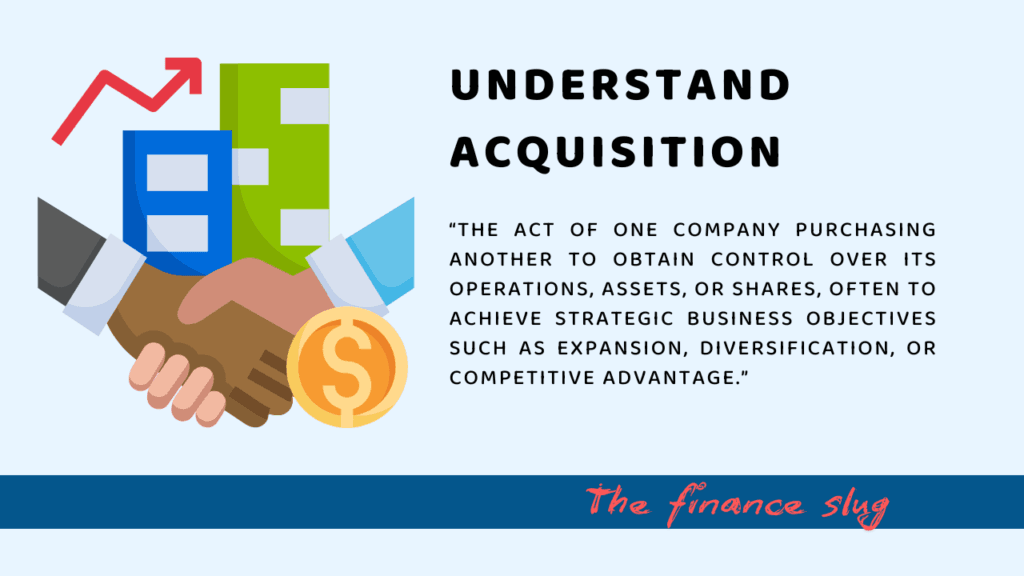
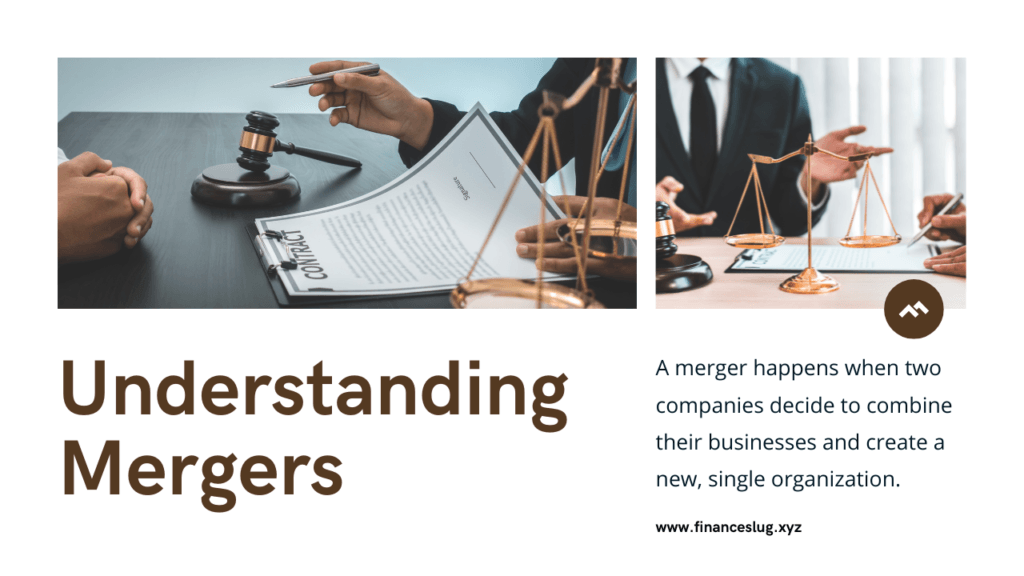




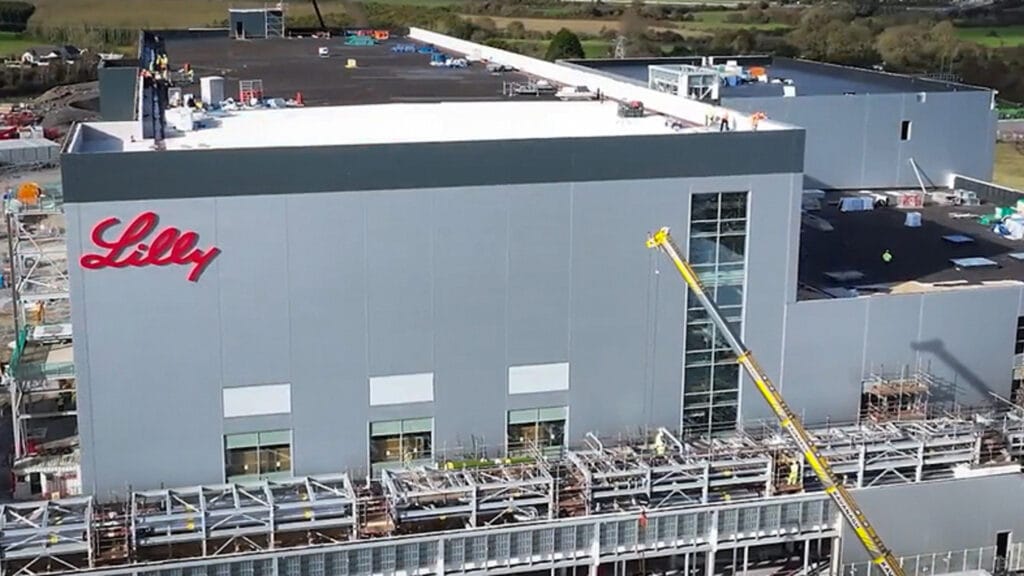

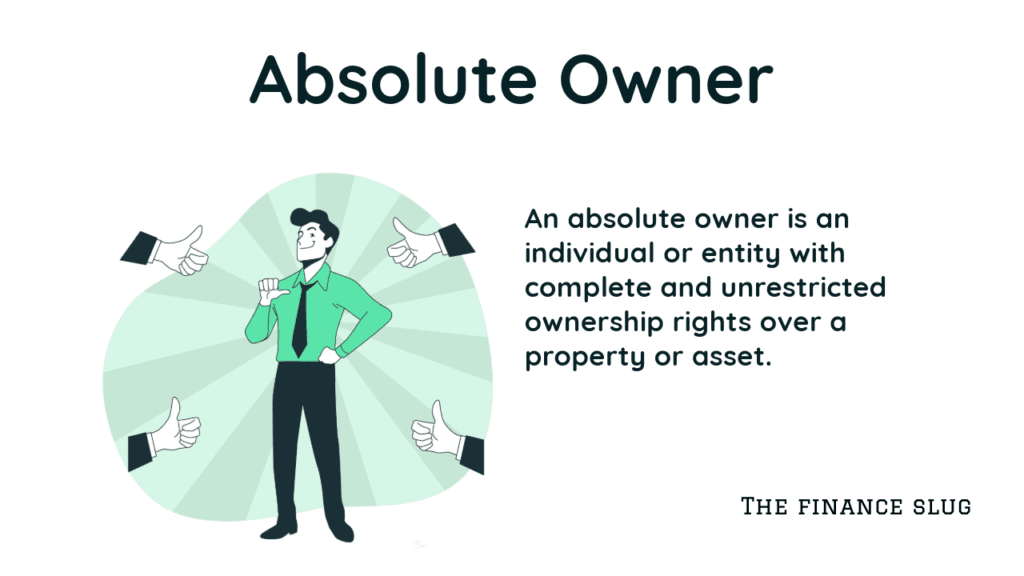

Pingback: Acquisition: Meaning, Process, Benefits, and Challenges